Aer Carry-On Review
The Aer Carry-On delivers the smooth wheels and solid build quality of the original in a much more carry-on-compliant size.
Our Verdict
Save time. Get access to brief summaries of our reviews so you can browse and make decisions more efficiently.
Pros
- Wheels are some of the smoothest we’ve tried
- Locking wheels are super handy if you’re unloading on an incline
- Fit and finish are superb
Cons
- Any scuffs are immediately noticeable, given how smooth the exterior is
- The handle shafts take up significant space inside the main compartment
- The compression panel takes up way too much packing space when unfolded
Technical Details
-
Capacity
41l
-
Weight (lb)
8.2 lb (3.7 kg)
-
Dimensions
21.7 in x 14 in x 9 in (55.1 x 35.6 x 22.9 cm)
-
Notable Materials
Polycarbonate, Metal, CORDURA® Ripstop Nylon, CORDURA Eco Fabric, FIDLOCK Hardware, YKK Zippers, Hinomoto Wheels
-
Manufacturing Country
Taiwan
-
Warranty Information
Full Review
Get up to 10% off Aer • Join Pack Hacker Pro
Carry-on compliance is one of the key aspects travelers look at when checking out rolling luggage. After all, who wants to spend precious vacation time staring at a luggage carousel after a long, tiring flight? Nobody (unless you’re into the niche hobby of luggage spotting). Unfortunately, not all rolling luggage is carry on compliant, and even the Aer Carry-On’s compliance is spotty, despite its many compelling features.
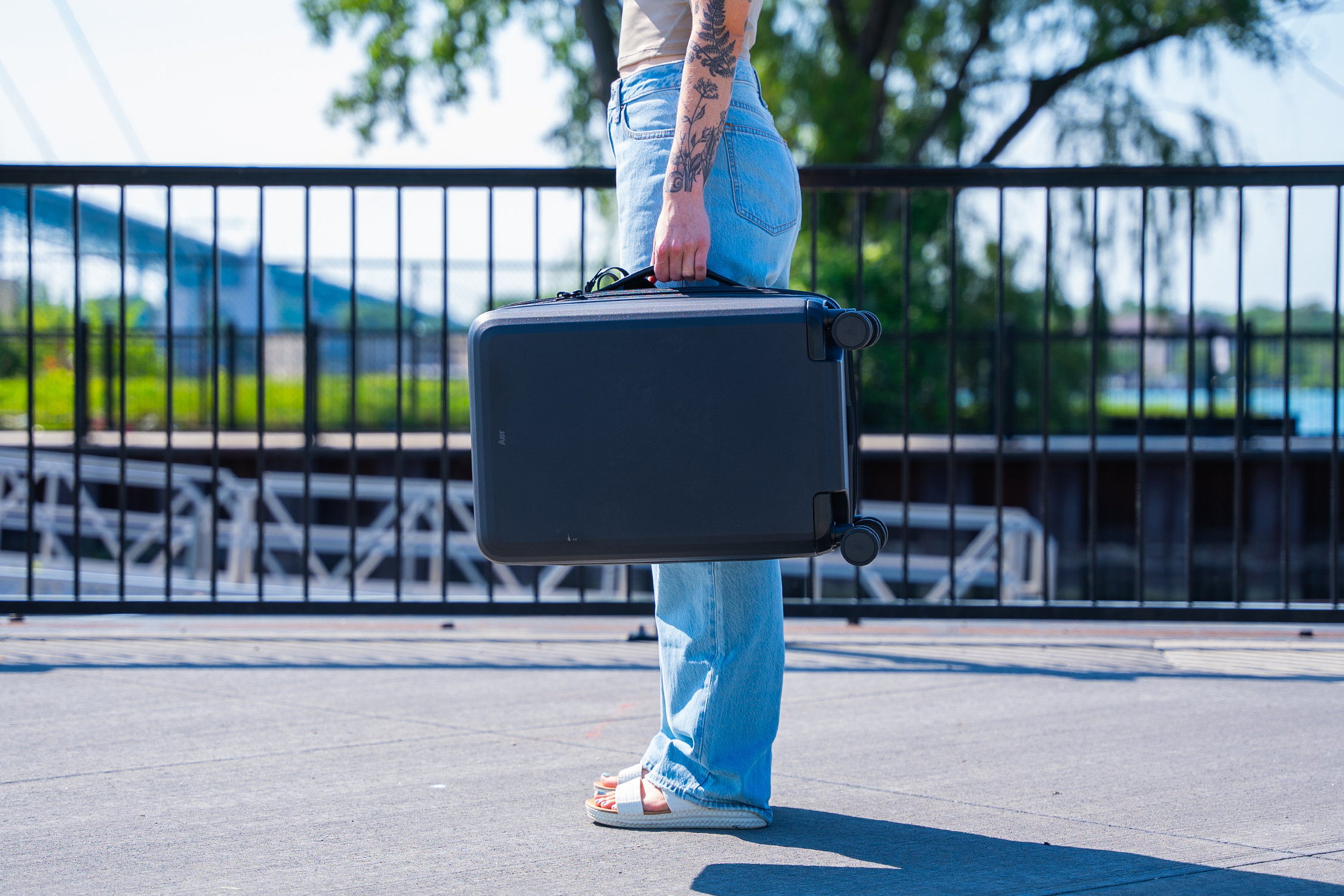
The good news is, there’s the aptly named Aer Carry-On Max, whose dimensions meet or fall below many carriers’ carry-on limits. How different is it from the regular version? Not very, as it turns out.
External Components
The main material covering the exterior is Makrolon polycarbonate. Branding aside, this type of synthetic material isn’t uncommon on hard-side luggage, generally being some sort of plastic. It’s light, easy to mold, and generally tough enough for the purposes of storing clothing and getting tossed around by burly baggage handlers. That said, it’s also not immune to scuffs and scratches, as evidenced by our sample here after two weeks of testing.
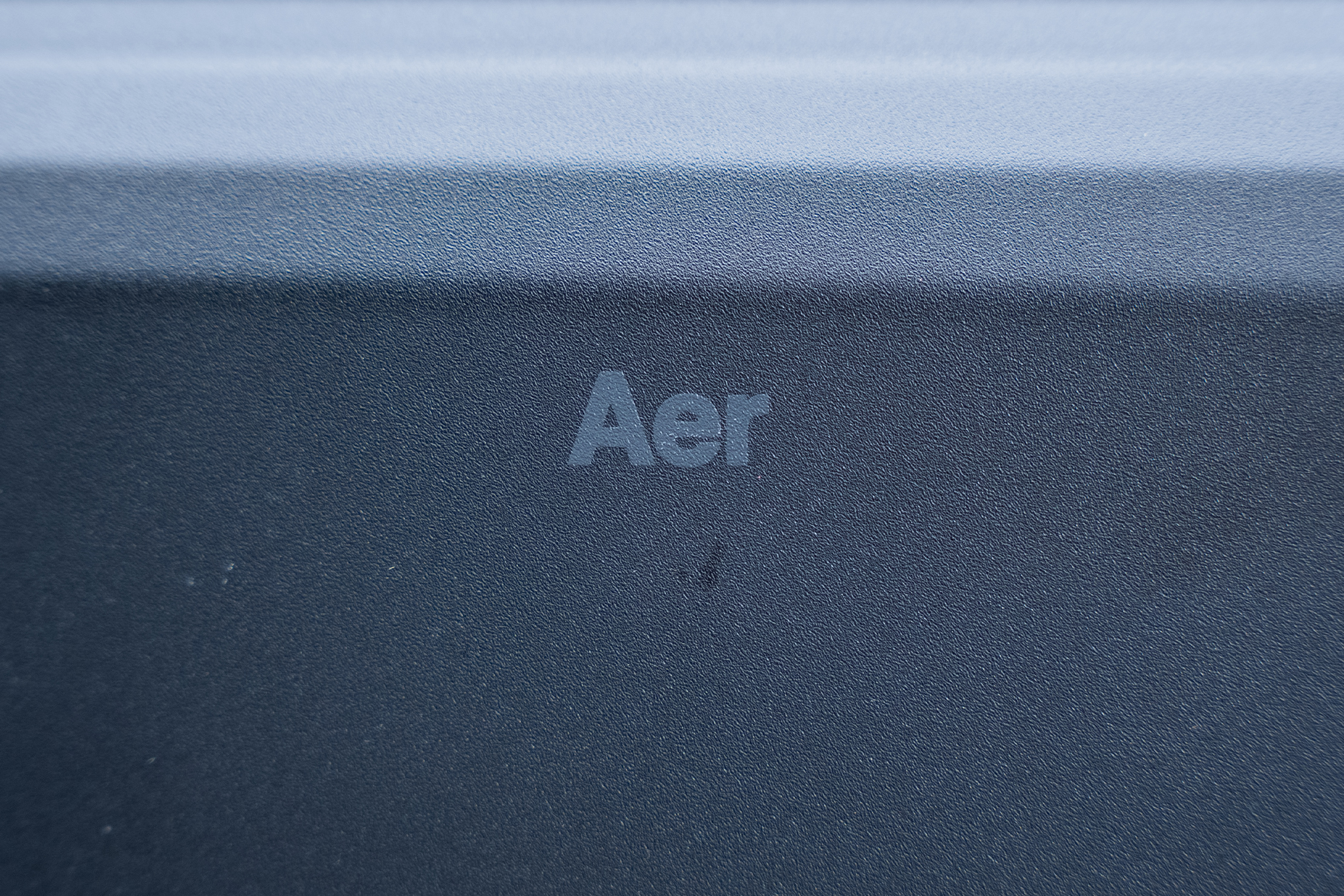
Truth be told, we’re not quite sure how this small scratch manifested, but it is quite noticeable against the black colorway. Besides the contrasting colors, the Carry-On very smooth design really leaves no room for scratches to hide or blend in. A brighter colorway may hide scratches like this better. Unfortunately, only black is available at the time of writing, with no Safety Orange or Dark Olive options (at least, for now).
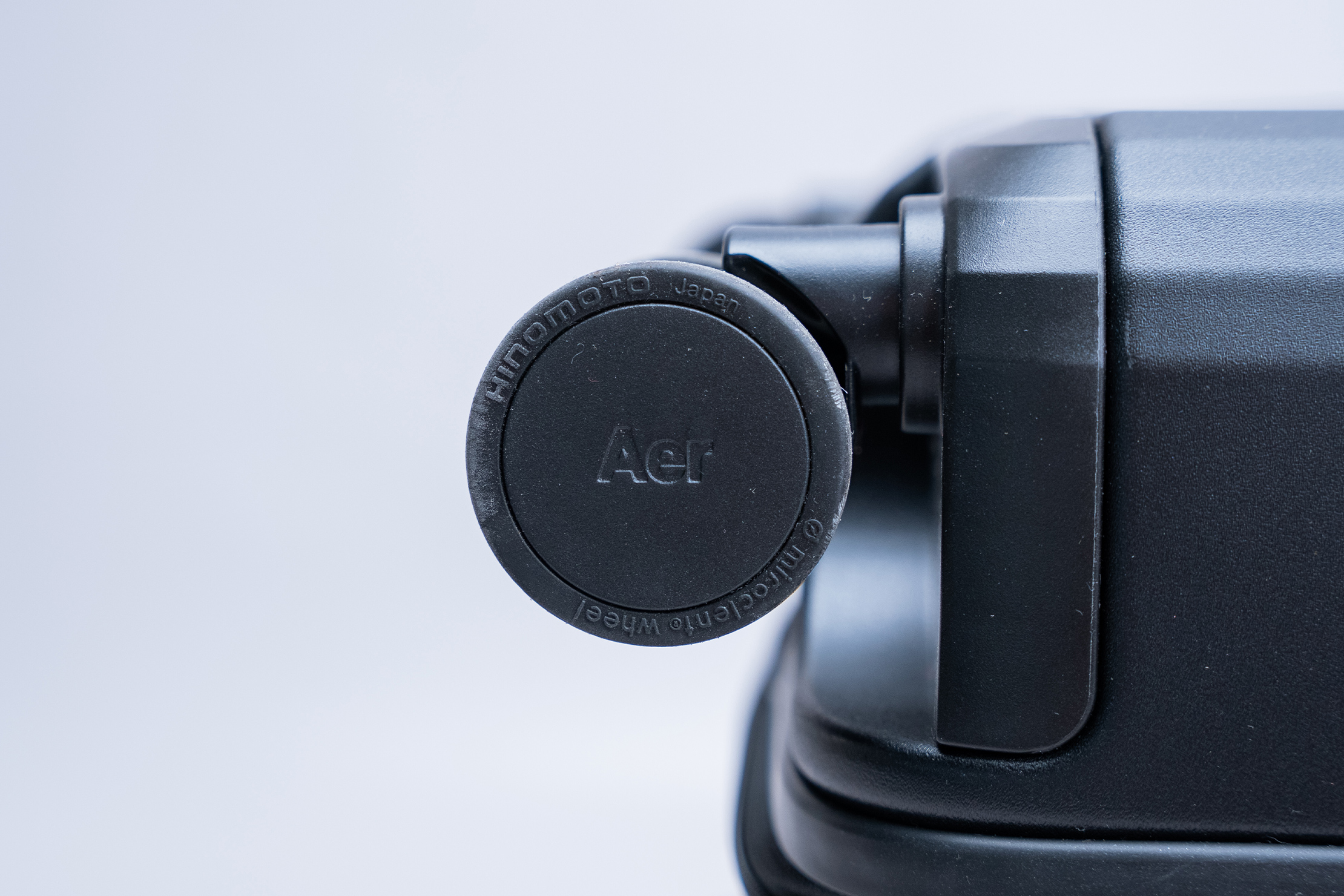
Fret not, as Aer’s build quality is as superb as it usually is, which is to say that any damages our sample’s accrued thus far are purely cosmetic. There’s very little wiggle or rattling in areas where we’d expect them, like the handle or the wheels. The latter are from Hinomoto, which have proven to be smooth rollers on the bigger Aer Carry-On Max, so they’re unsurprisingly well-suited here, too. The zippers are from YKK and feature a built-in TSA-approved lock, so you don’t have to provide your own. Needless to say, though not taken for granted, these zippers didn’t jam throughout our testing.
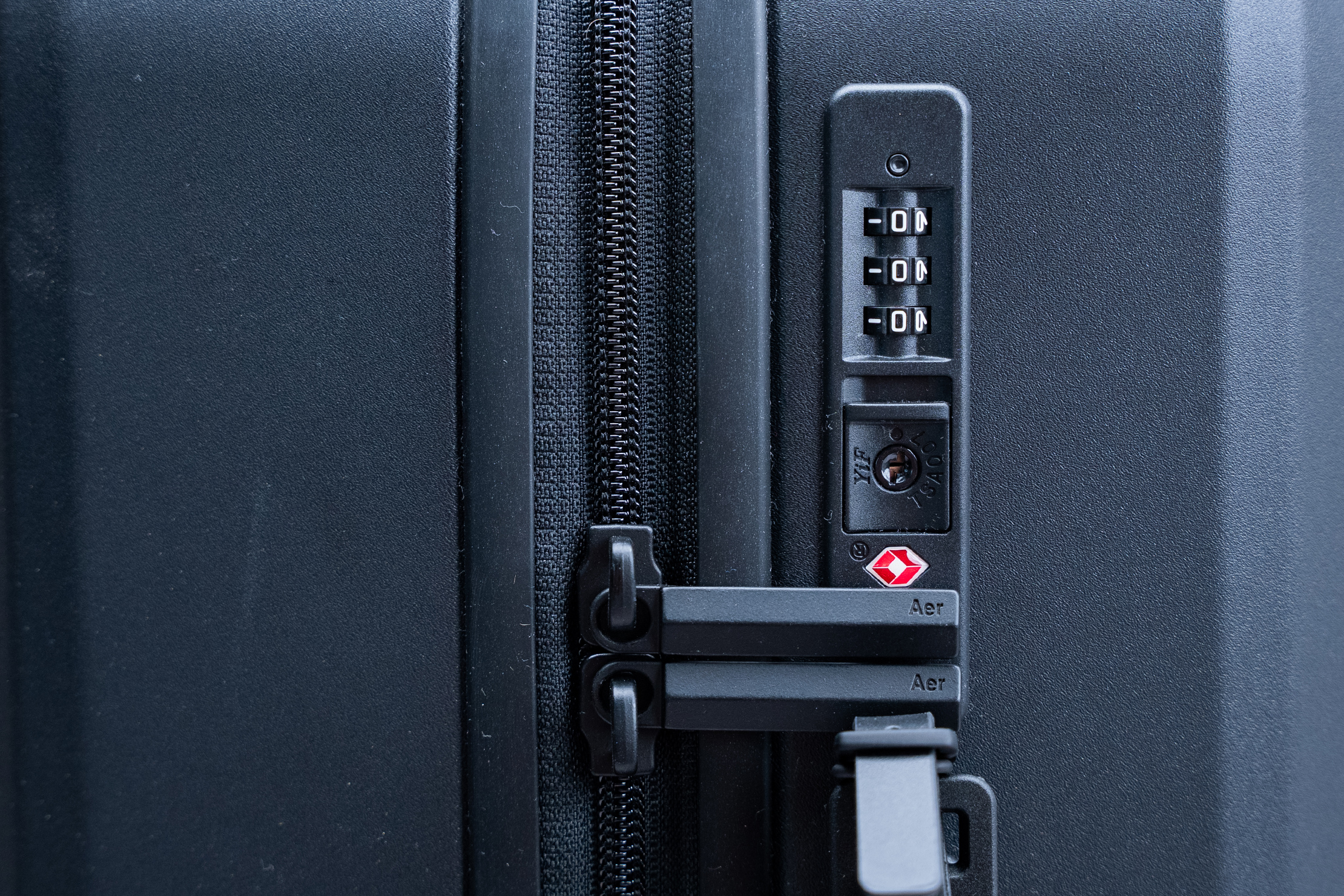
The top and side handles lay flat against the Carry-On, maintaining the bag’s sleek, low-profile look. We understand Aer’s desire for such an aesthetic. However, we can’t ignore the handles’ lack of padding, which is a bummer when you have to hand-carry the Carry-On up a flight of stairs. However, they’re fine for simple quick-grabs situations, like pulling the bag out of a trunk or an overhead bin. As an aside, we also wish there were a bottom handle or something to grab onto underneath. It’s a feature we see on other luggage, and it’s useful for sliding the bag around while it’s open.
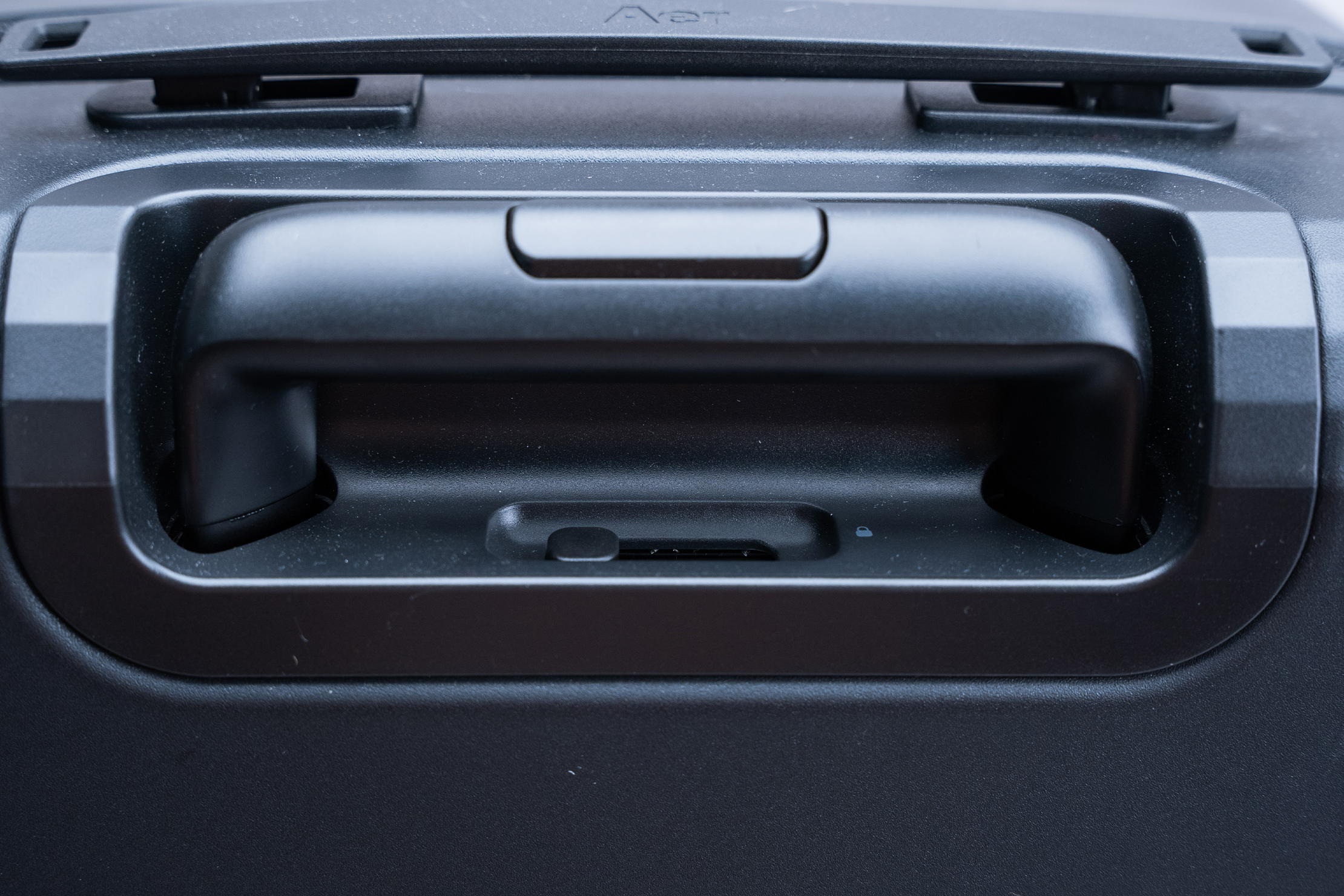
Included is a luggage tag that you can attach to the holes on either end of the handles. We like having this option despite the fact we’re already using smart trackers in case our bags get lost. Of course, you can also use the handles’ holes to hang whatever accessories you want.
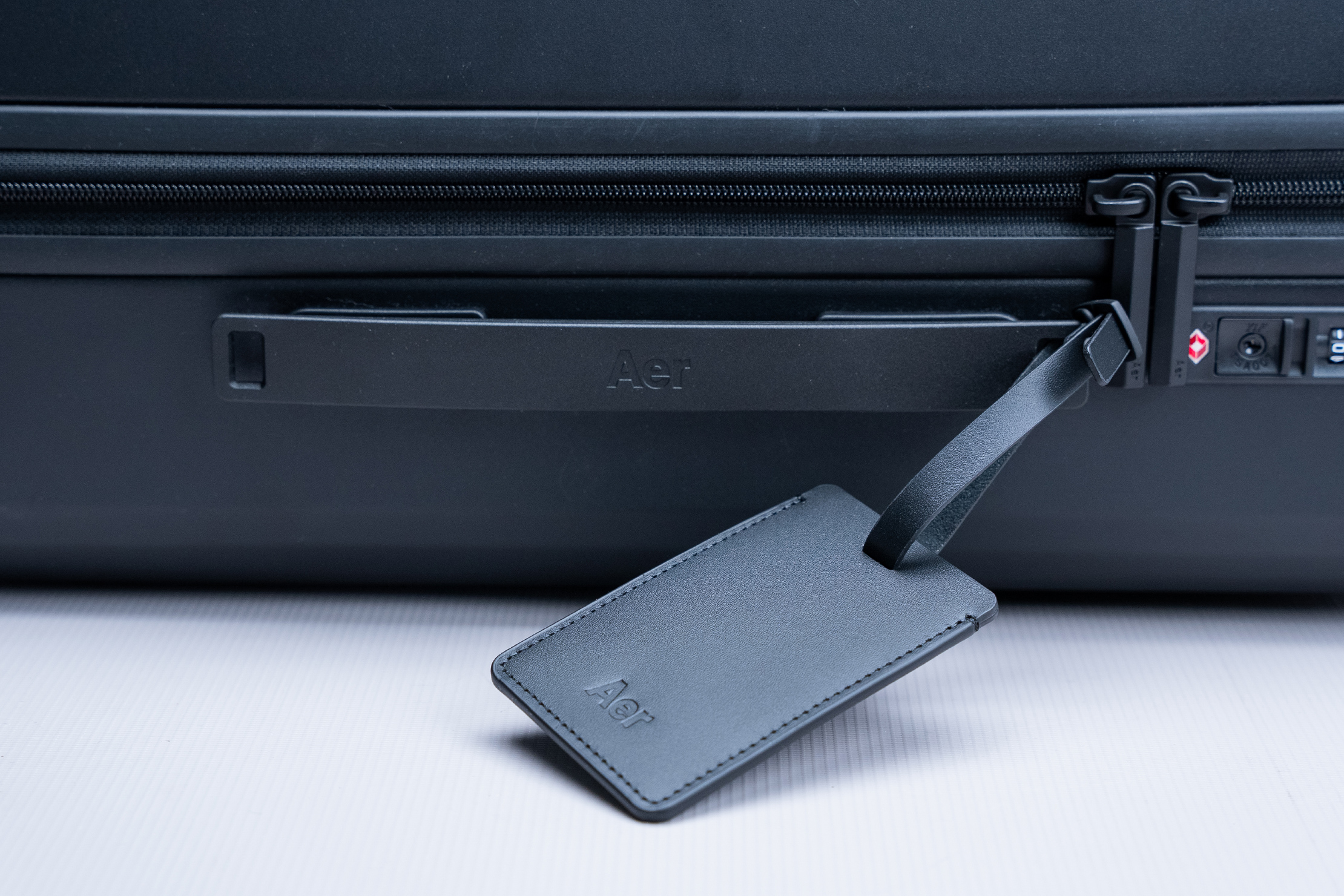
The so-called “triangular trolley system” refers to the handle’s shape, which is flat on three sides to make it easier to grip. Aer says this also helps make the handle more stable, minimizing any wiggle room and rattling. Above is the lock release button, for which there are four levels of height adjustment you can choose from (excluding fully retracted, of course).
Fit Notes
As we already mentioned, the Carry-On’s wheels roll very smoothly on most surfaces, exhibiting minimal rattling throughout testing. We’ve gained a much better appreciation for this level of smoothness after testing the Eagle Creek Gear Warrior XE 4-Wheel Carry-On Luggage, whose beefy but ultimately rattle-y wheels proved less than optimal. Moreover, there’s also notably very little rattling transferred to the handle (you know, the part you hold directly). If we had any nits, it’s that releasing the lock doesn’t let the handle retract all on its own; you have to push it yourself. We noted in our Aer Carry-On Max review that this may be a flaw in review samples, but it now seems to be how it’s intended to work.
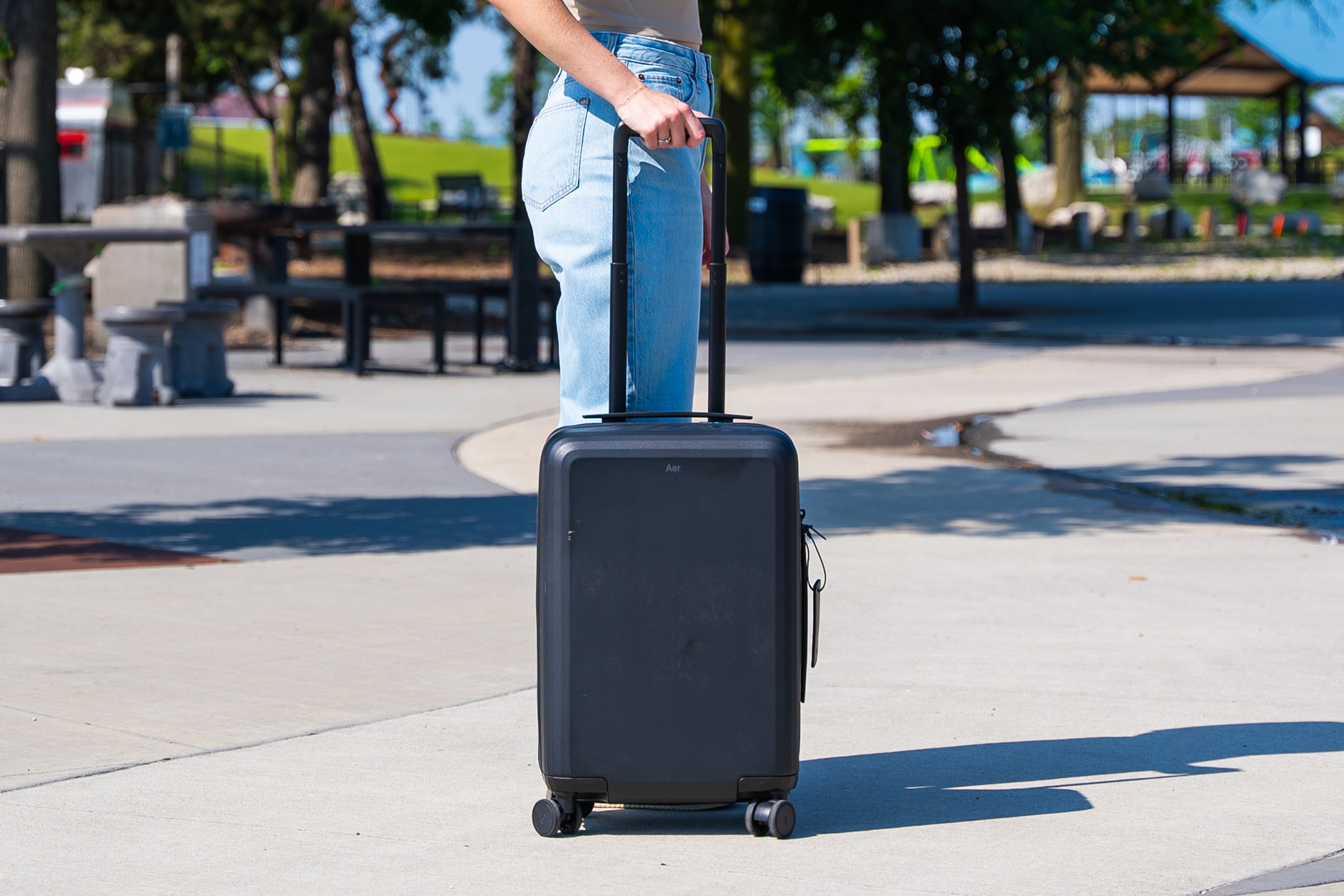
Finding the right height adjustment is fairly easy since there are four levels to choose from. Whether we preferred rolling the Carry-On upright beside us or behind us at an angle, we had no issues getting comfortable. Having the option to lock the wheels is also quite nice since we never know if we have to stop on an incline, whether it’s an uneven parking lot or an angled moving walkway. Needing to lift the handle to access the wheel lock switch is a minor inconvenience, but it’s one we can live with.
Inside The Carry On Luggage
The exact difference in volume between this and the regular Aer Carry-On is seven liters (41L vs. 48L). This is a substantial difference in capacity, but arguably more important is how this makes the Carry-On much more carry on compliant with airlines. See, carry on compliance can be very nuanced, as it dictates the dimensions and weight limit of the bags you can take with you on-board, but it can also depend on what class you’re in and whether you’re flying regional or international. Aer caught flak for this since the regular Carry-On’s dimensions are technically over a lot of these limits. In practice, many airlines are loose with these restrictions, and we never had to check in the regular Carry-On during our testing.
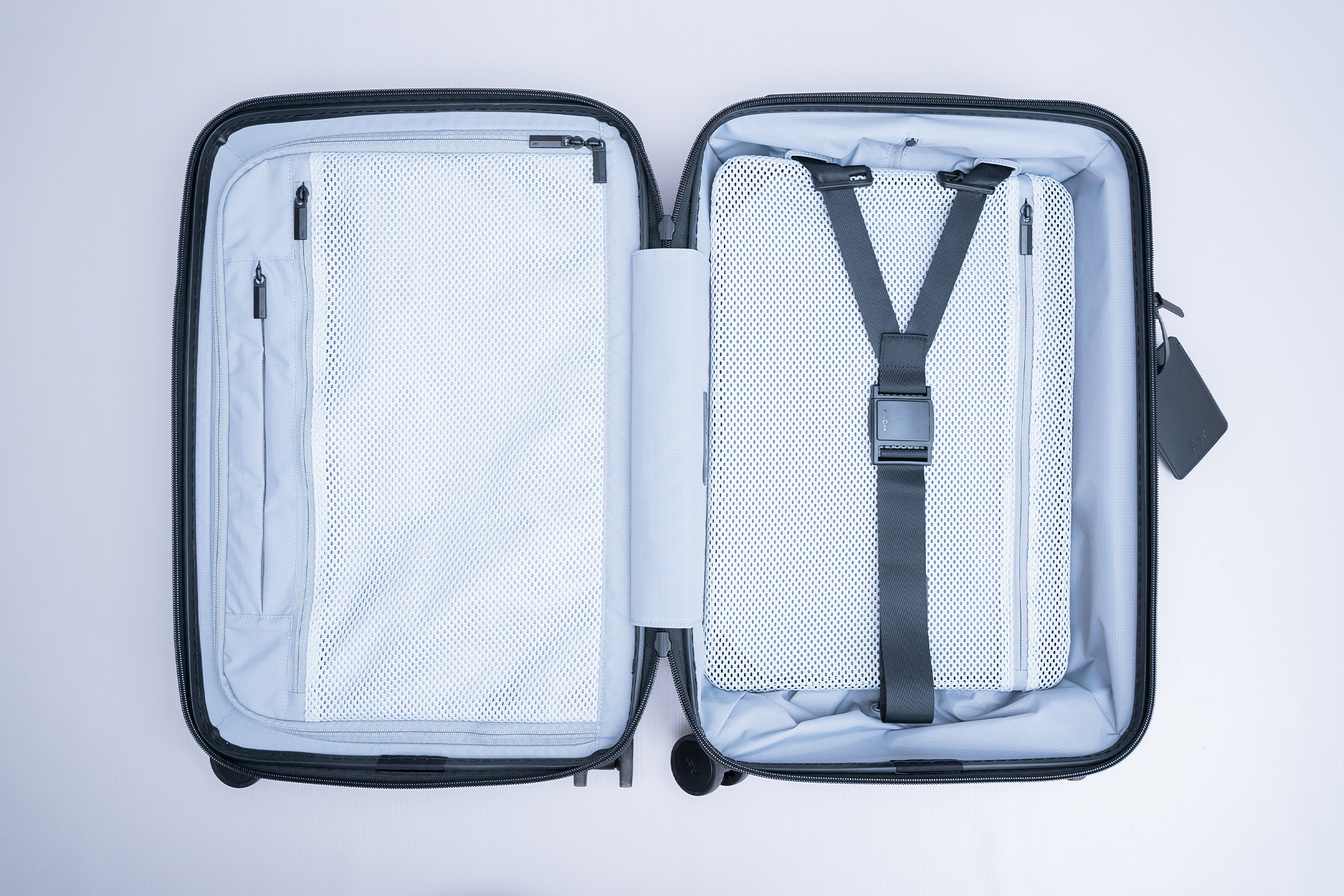
Understandably, though, the Carry-On Max’s on-paper size made people apprehensive. Fortunately, the Carry-On is much more widely compliant, and Aer even made sure to put a table on its site comparing the two bags to showcase this.
The main compartment opens in a typical clamshell design, and the interior is similarly straightforward. There’s a bucket space to the left covered by a partition doubling as a large mesh pocket, while the right bucket space has a compression panel held down by a Y-shaped strap. You don’t have to squint your eyes to see how similar this is to other carry on luggage.
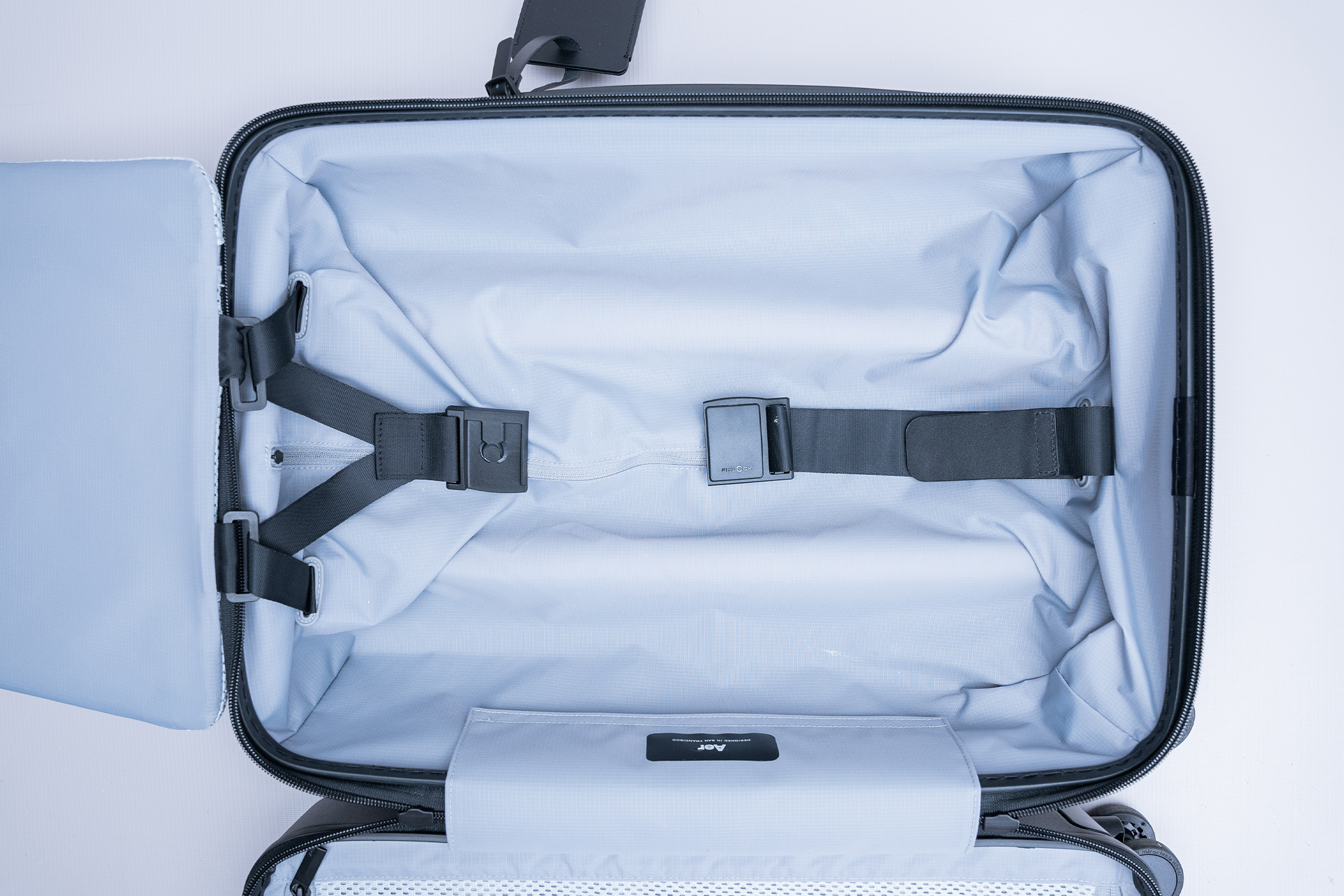
The distinguishing factor here is the interior’s fit and finish. It’s not uncommon to find bags with baggy liners that get in the way of packing. Try to stow a packing cube or clothing, and you’ll soon find half the liner puffed up beside it; that’s not the case with the Carry-On. The CORDURA® re/cor recycled nylon liner is fitted and taut to the shell quite well. This is quite fortunate because there’s already substantial space occupied by the handle’s assembly, which you can see visibly imprinted at the back of the right bucket space.
The handle and its assembly are pretty much the same size as in the Carry-On Max, so its presence is felt much more in the Carry-On tighter interior. That said, it’s not like it’s overly cramped here. We can still pack five to six days’ worth of clothing and gear and can stretch it out to a full week with shrewder planning. The trick is to place packing cubes and pouches between the shafts, creating an even platform where you can layer wider items.
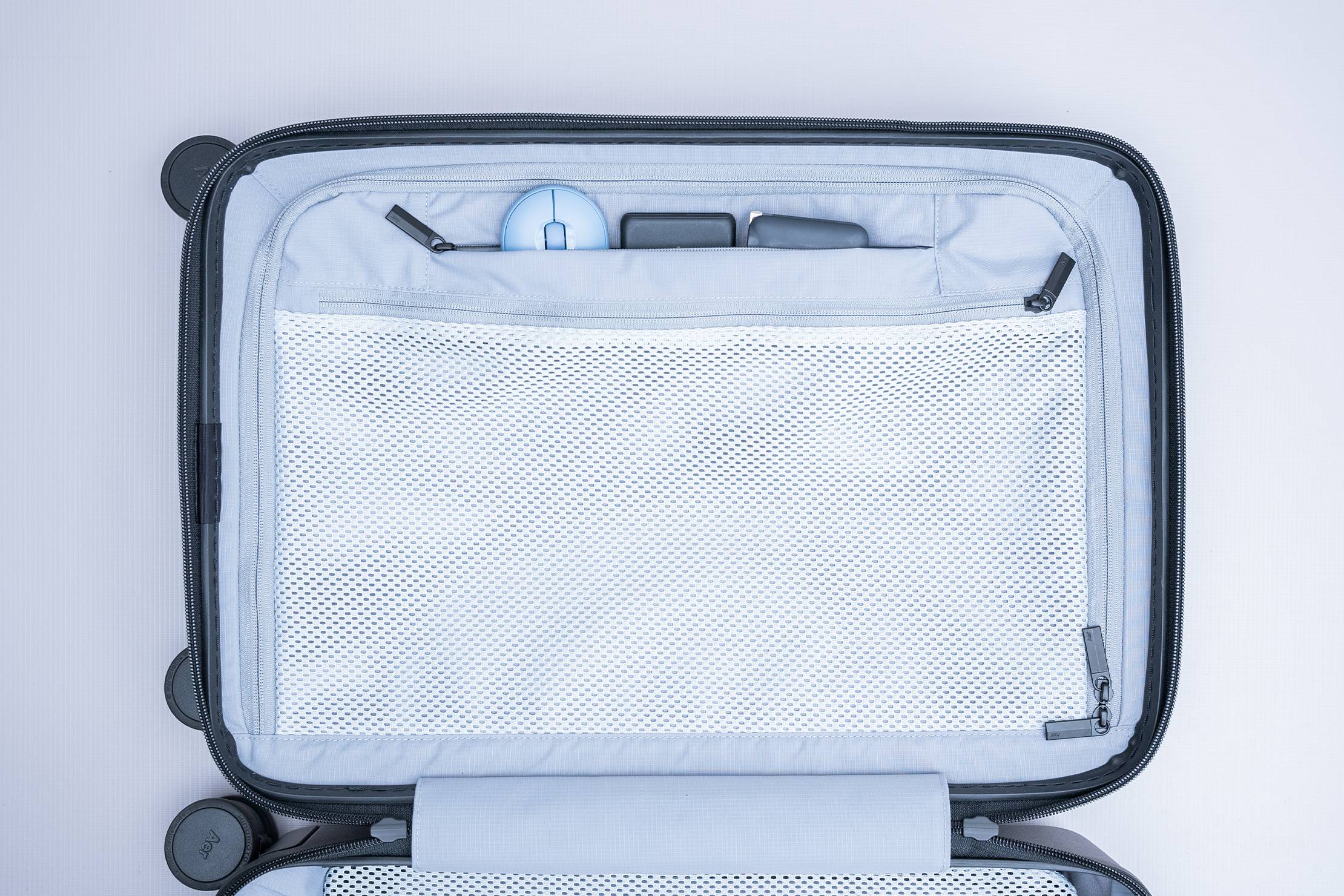
Like the larger version, we’re still not a fan of how the compression panel folds up since it unnecessarily occupies space beyond the interior. We would’ve preferred if it folded to the side. However, some have pointed out that this then blocks the other half of the interior. Fair enough, so we’ll call this a matter of preference.
As for organization, the compression panel itself has a mesh pocket for flat items like a packable hat, and the left bucket space’s partition also has a mesh pocket for smaller clothing like socks and underwear. Also on the left side, and just above the mesh pocket, is a small zippered pocket for small tech accessories. There’s also a tiny slot for a smart tracker, which further encouraged us to use the entire pocket for tech.

Lastly, we packed the bucket space on the left side with the rest of our gear. This includes a pair of sneakers, a portable hair dryer, a toiletry bag, and a laundry bag. Though this area is slightly smaller than the main bucket space, you can still fit quite a lot, and it really benefits from how taut the liner is.
Usage Timeline
Condition: Excellent
- Looks like the regular size Aer Carry-On Max…but smaller
- Despite its compact size, it still feels pretty roomy
- Lockable wheels are a cool feature, though not always necessary
Condition: Excellent
- Developed some scratches on the exterior that aren’t coming off, though that’s something we see often on hard luggage
- Some of the smoothest wheels we’ve tested to date
- Heavier than other luggage of this size, though it’s manageable if the other features are worth it for you
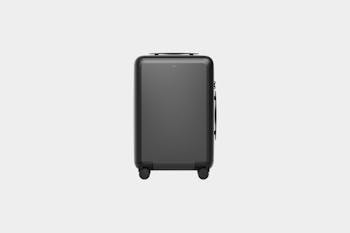






Get your questions about the Aer Carry-On answered from our team and the Pro Community right here on the page. Plus, join discussions with other members about gear, guides, and more.
Join Pack Hacker Pro or, Sign In